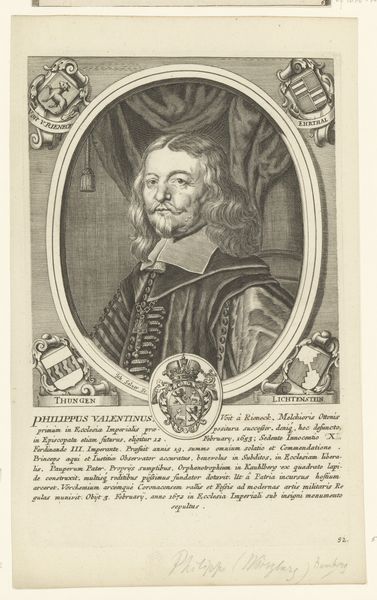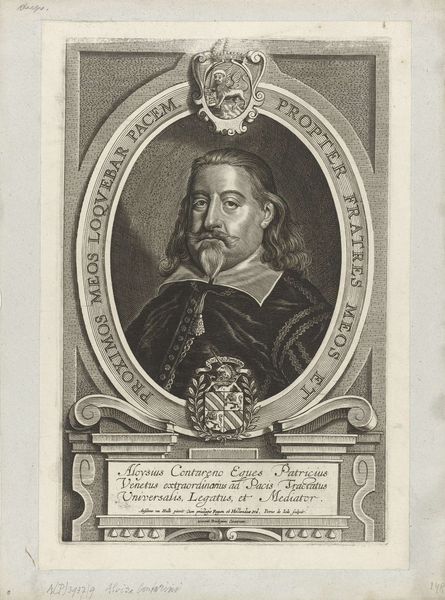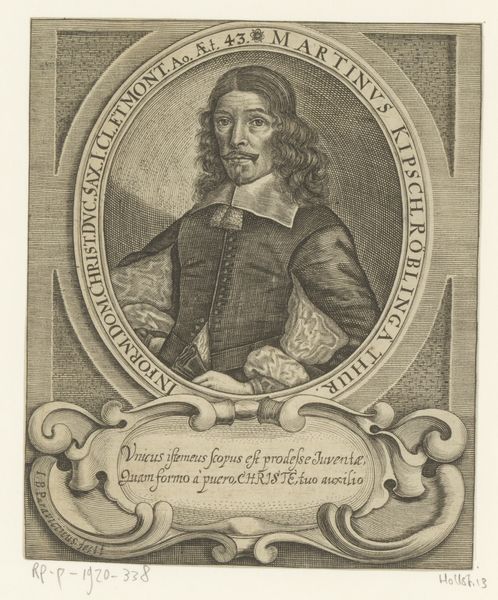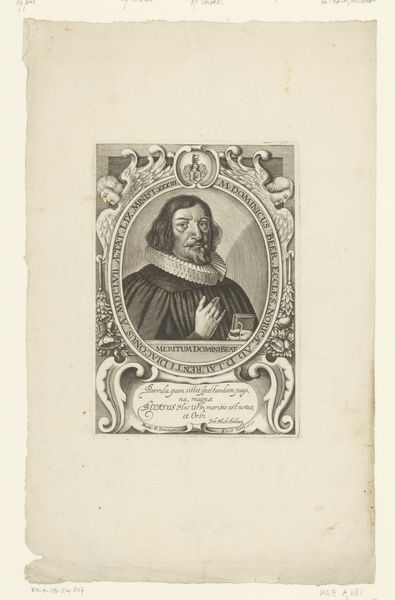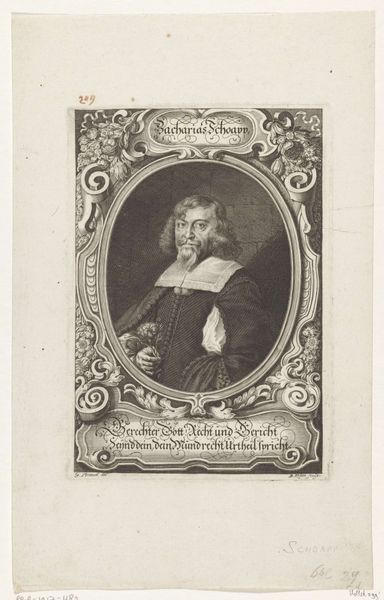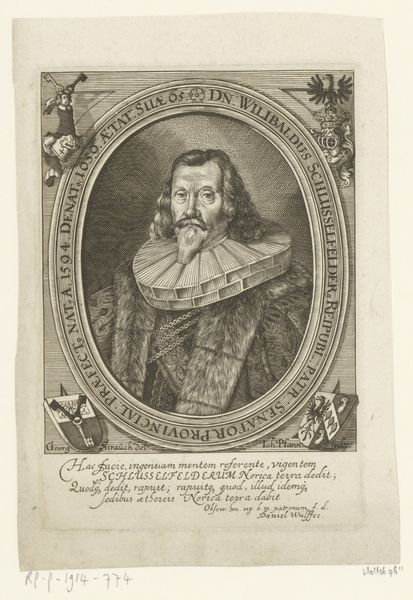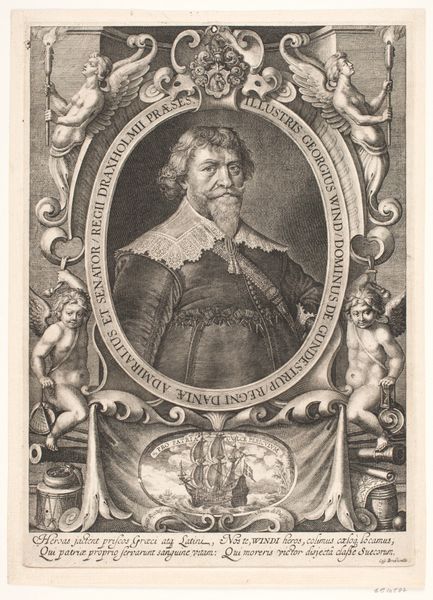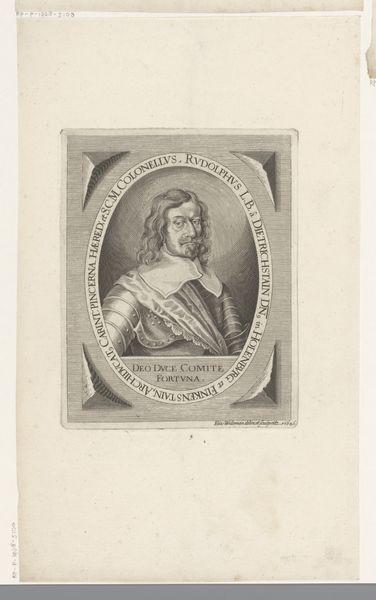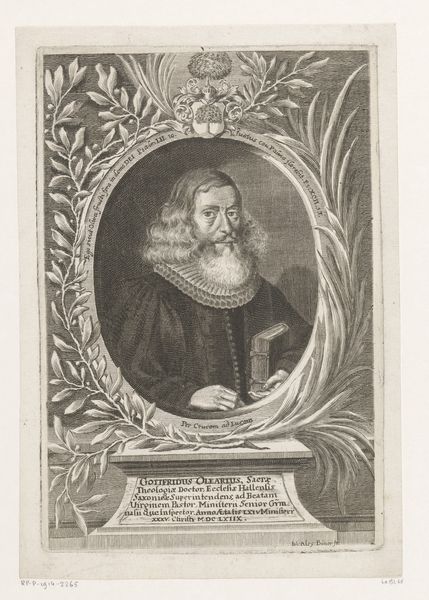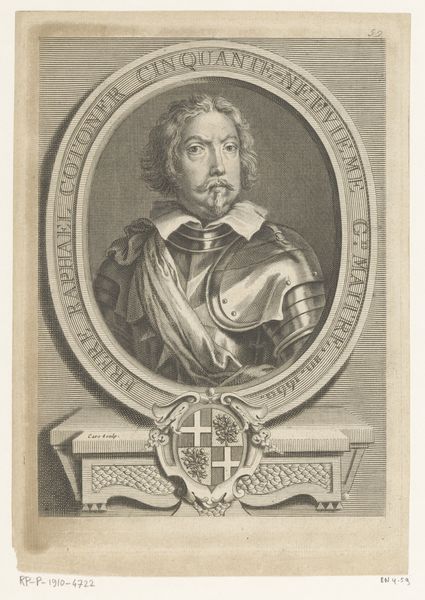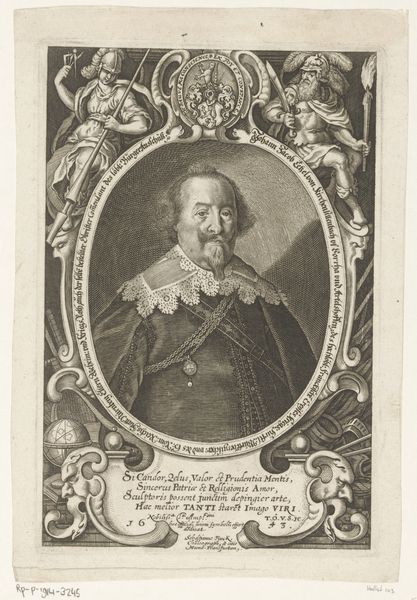
drawing, print, engraving
#
portrait
#
drawing
#
baroque
# print
#
engraving
Dimensions: height 299 mm, width 201 mm
Copyright: Rijks Museum: Open Domain
Curator: Before us, we have Pieter de Bailliu’s "Portret van Mathaeus Wesenbeck," an engraving from 1649 held in the Rijksmuseum collection. Editor: The intensity in Wesenbeck’s gaze is remarkable. There’s a gravitas in the texture of this man’s formal attire. It's contained within the frame. Curator: Indeed, the artist emphasizes texture, particularly in Wesenbeck's clothing. See the complex use of line to simulate the drape and weight of his garments. Note also the two crests, above and below the image of the figure, rendered meticulously through cross-hatching and stippling techniques. Editor: These aren’t merely decorative touches; they communicate power. Each symbol, painstakingly engraved, whispers tales of lineage and standing. The cartouche below presents more direct markers of status through the Latin text. Wesenbeck isn’t just anyone; the symbols suggest a legacy of strength and virtue. The oval enclosing the portrait might suggest continuity—the enduring essence of Wesenbeck's soul or his influence on posterity. Curator: The Baroque love of ornamentation is evident not only in the clothing and crests, but also in the curvilinear frame and overall symmetrical design. This all enhances Wesenbeck’s authority. Editor: It speaks to the era’s worldview, where family, reputation, and societal standing held immense importance. The Latin phrases “Constantibvs Exemplis” and “Expedit Firmare Animum” which adorn the portrait around Wesenbeck, act as mottoes, calling on viewers to emulate Wesenbeck’s resolute spirit. In this light, Bailliu creates an instructive piece, not only memorializing a man, but offering guidance, suggesting how to lead a virtuous life in emulation of a learned individual. Curator: A print like this offered wider circulation of these ideas. As we step back from this formal arrangement of form and figure, the composition reflects the cultural values of the time through material arrangement and reproduction. Editor: Bailliu uses familiar and repeated cultural shorthand to establish authority. In a sense, then, his art becomes a way to access an entire set of beliefs about lineage and moral character, providing not merely a depiction of a man, but an emblem of his era.
Comments
No comments
Be the first to comment and join the conversation on the ultimate creative platform.
